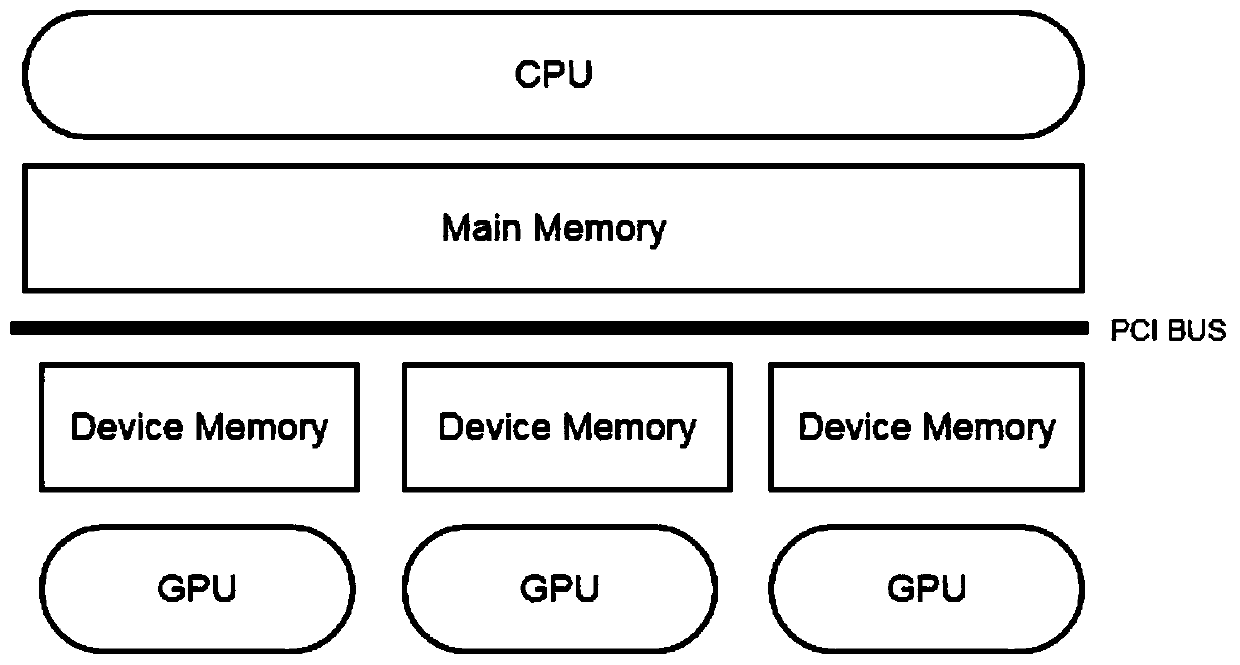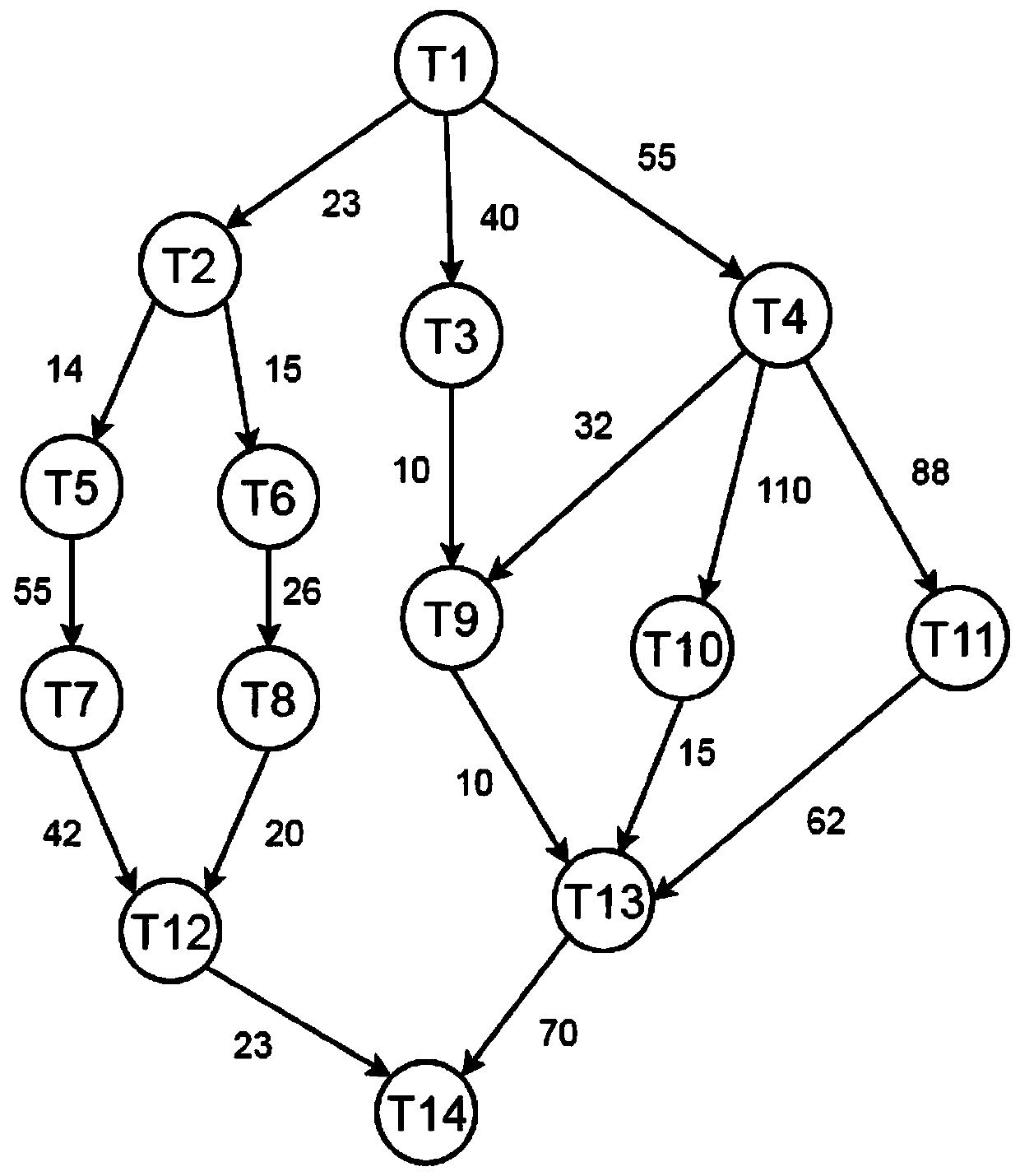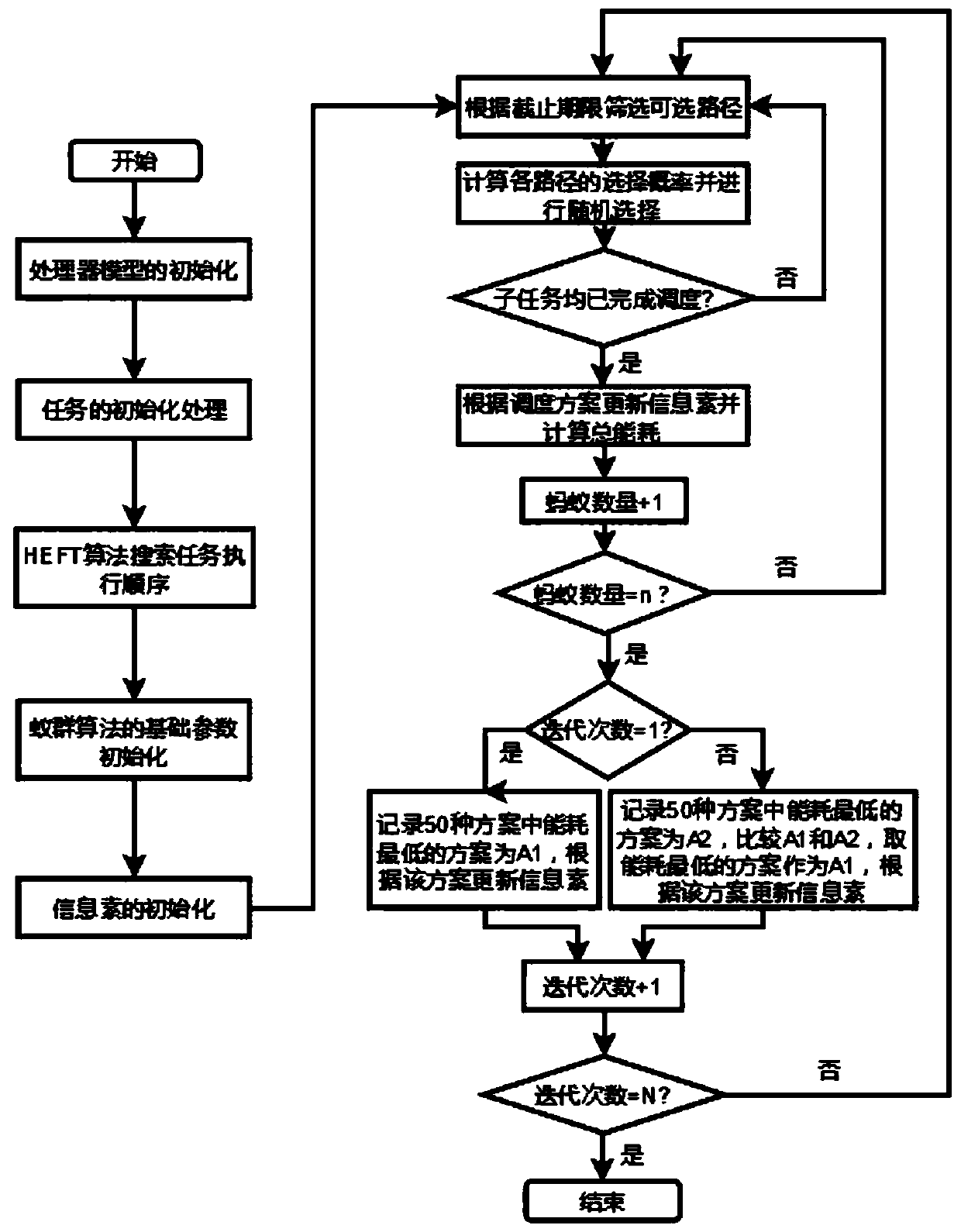Low-energy-consumption task scheduling strategy for CPU-GPU heterogeneity
A technology for task scheduling and low energy consumption, which is applied in energy-saving computing, program startup/switching, program control design, etc., and can solve the problems of insufficient distinction between heterogeneous cores, insufficient flexibility, and optimization of task scheduling length.
- Summary
- Abstract
- Description
- Claims
- Application Information
AI Technical Summary
Problems solved by technology
Method used
Image
Examples
Embodiment Construction
[0075] In order to make the purpose, technical solutions and advantages of the present invention more clear, the embodiments of the present invention will be described in detail below in conjunction with the accompanying drawings.
[0076] The present invention is based on the task scheduling strategy under the CPU-GPU master-slave architecture environment, and the schematic diagram of the heterogeneous architecture is as follows figure 1 As shown, here we take the illustration as an example. There is one CPU and three GPUs in the processor, and data is exchanged between different processing cores through the PCI main line. The processed tasks are as follows: figure 2 As shown in the DAG of , it can be divided into 14 subtasks with dependencies and large differences in communication volume. Before starting task scheduling, the entire system needs to set its own processor performance-related parameters (step 1), and obtain task-related information when accepting tasks (step 2)...
PUM
 Login to View More
Login to View More Abstract
Description
Claims
Application Information
 Login to View More
Login to View More - R&D
- Intellectual Property
- Life Sciences
- Materials
- Tech Scout
- Unparalleled Data Quality
- Higher Quality Content
- 60% Fewer Hallucinations
Browse by: Latest US Patents, China's latest patents, Technical Efficacy Thesaurus, Application Domain, Technology Topic, Popular Technical Reports.
© 2025 PatSnap. All rights reserved.Legal|Privacy policy|Modern Slavery Act Transparency Statement|Sitemap|About US| Contact US: help@patsnap.com



